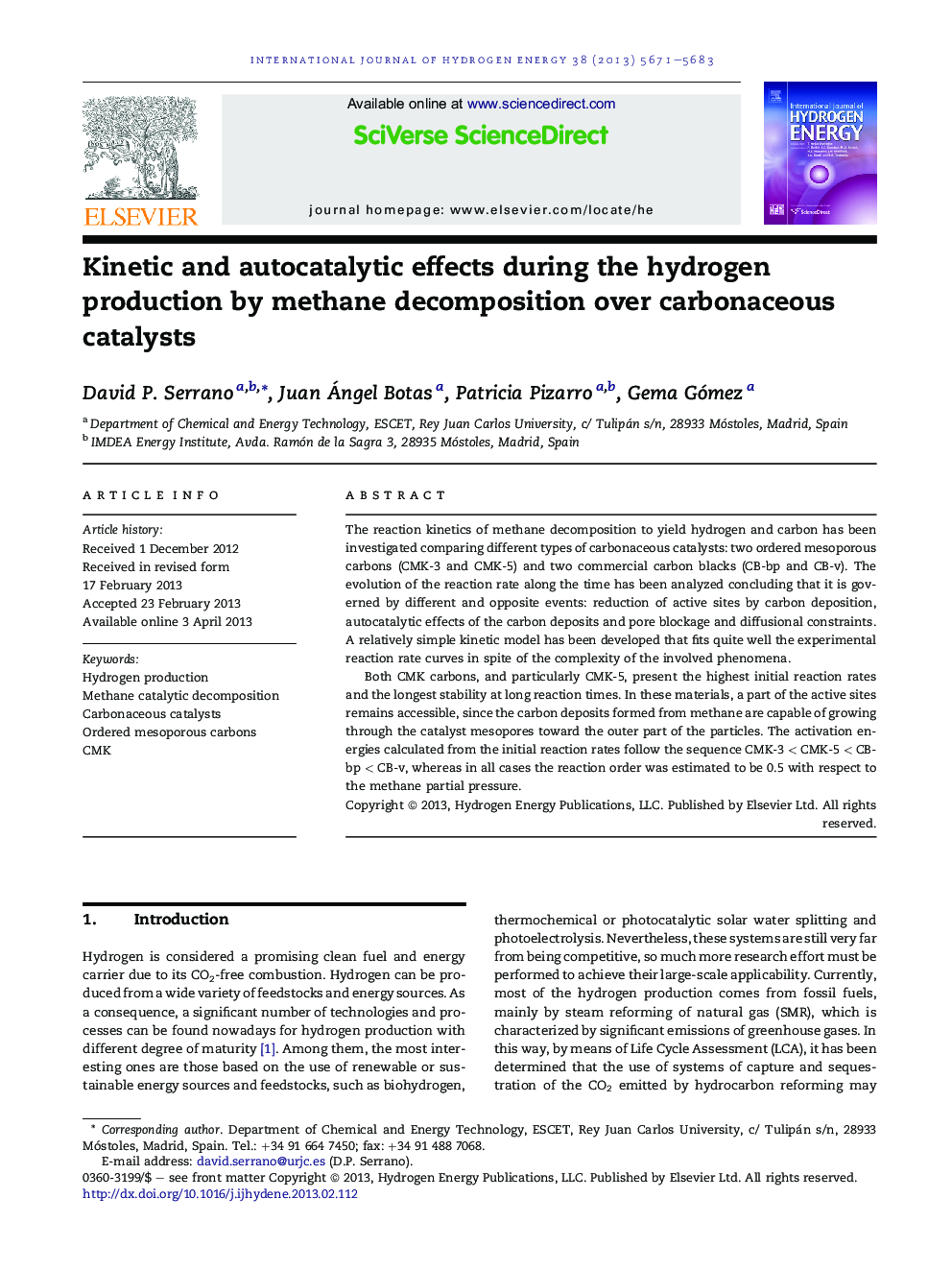| Article ID | Journal | Published Year | Pages | File Type |
|---|---|---|---|---|
| 1281676 | International Journal of Hydrogen Energy | 2013 | 13 Pages |
The reaction kinetics of methane decomposition to yield hydrogen and carbon has been investigated comparing different types of carbonaceous catalysts: two ordered mesoporous carbons (CMK-3 and CMK-5) and two commercial carbon blacks (CB-bp and CB-v). The evolution of the reaction rate along the time has been analyzed concluding that it is governed by different and opposite events: reduction of active sites by carbon deposition, autocatalytic effects of the carbon deposits and pore blockage and diffusional constraints. A relatively simple kinetic model has been developed that fits quite well the experimental reaction rate curves in spite of the complexity of the involved phenomena.Both CMK carbons, and particularly CMK-5, present the highest initial reaction rates and the longest stability at long reaction times. In these materials, a part of the active sites remains accessible, since the carbon deposits formed from methane are capable of growing through the catalyst mesopores toward the outer part of the particles. The activation energies calculated from the initial reaction rates follow the sequence CMK-3 < CMK-5 < CB-bp < CB-v, whereas in all cases the reaction order was estimated to be 0.5 with respect to the methane partial pressure.
► Kinetics comparison of methane decomposition over CMK and carbon blacks is assessed for the first time. ► Carbon deposits from DeCH4 are autocatalytic but reduce the number of initial active sites. ► Deactivation affects to both initial carbon catalysts and new formed carbon deposits. ► Initial activation energy of CMK carbons is lower than those obtained for commercial carbons. ► CMK-5 exhibits the highest activity and deactivation resistance, even superior than carbon blacks.
